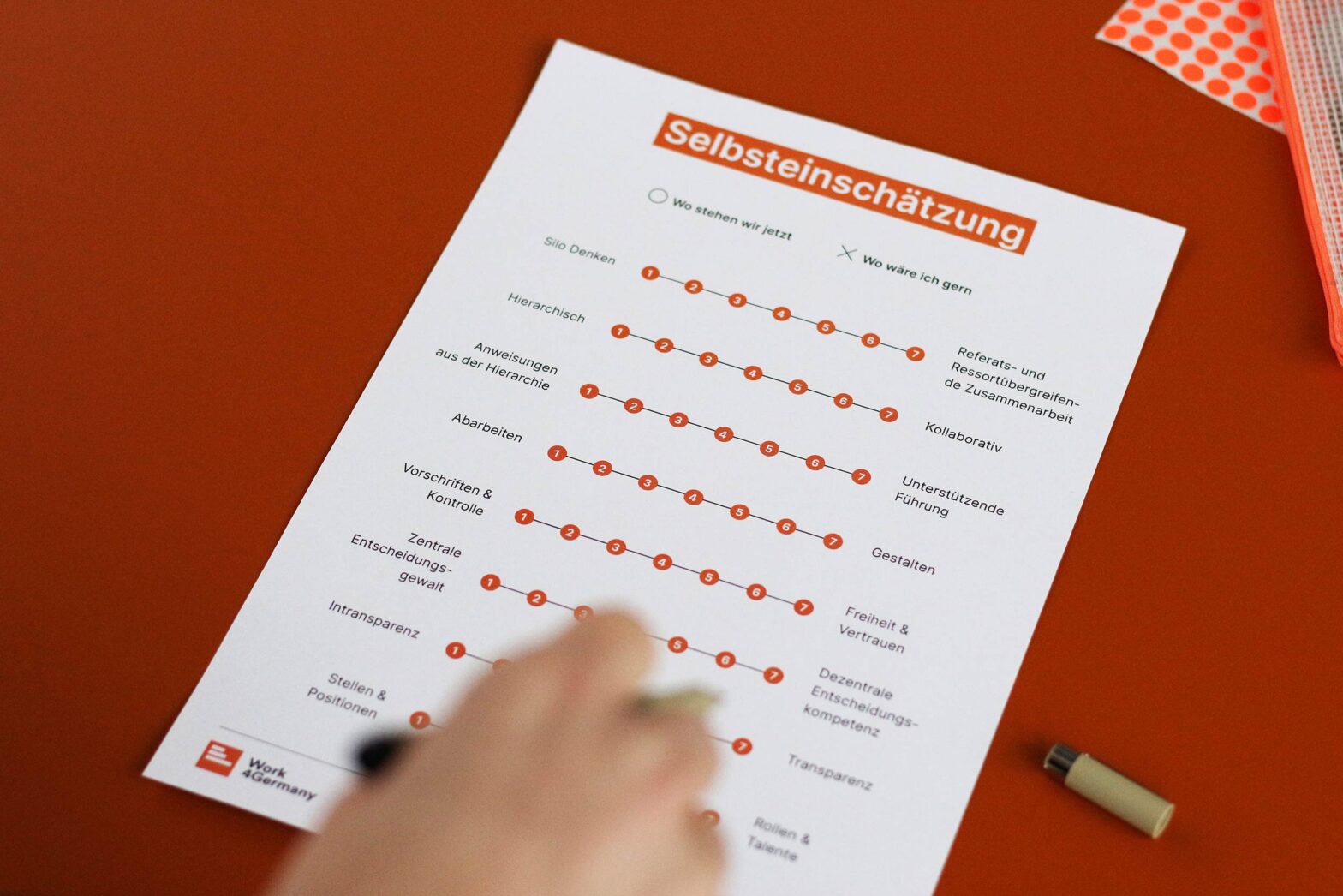Our blog post on visual culture, design artefacts and how graphic design supports digital transformation in the public sector is finally out. We published it on Thursday, eventually.
One of the reasons it took a little longer was a collection of tools and templates from the fellowship programmes we wanted to reference in the post. They now come with a dedicated method collection on our website. Putting these together took the colleagues a bit of time, but they allow easier re-use for future fellows, project partners, and whoever else is interested in using them.
Another reason was the editing. I created my own rabbit holes, for example, when starting a discussion about alternatives to the term ‘citizens’. Public servants from around the world, or at least the Global North, chipped in and offered their preferred substitutes. Many alternatives got mentioned, including residents, locals, people, end users, beneficiaries, etc.
Maturing the fundamentals
This week, I had new-year check-in conversations with almost every designer. I wanted to hear what’s on their minds, what they are looking forward to, what’s possibly concerning them and what’s something they want me to look into. I took quite a few notes and got things to look into.
One immediate takeaway was writing a short summary in Slack of what we discussed in the mysterious design leadership meeting the 3 design leads and I have every Friday right before noon. At GDS, a similar practice helped demystify the often rather unspectacular managerial work that happens in those meetings.
From now on, I will share the topics discussed in that session with all designers every Friday afternoon. I liked wrapping things up in my GDS days by compiling weeknotes for the team. Some were sent by email, and others were posted in certain Slack channels. It allowed people to stay in the loop. It could be good to revive and introduce these approaches to Digital Service.
While still not completed, Charlotte, Tom, and I made solid progress reviewing our design skills and level descriptions. At the current speed, it will take us another 3 hours. Hopefully, we can progress faster. We want to share them with the design team – for feedback, orientation and application in annual goal setting.
For February, teams and cross-functions are preparing their quarterly objectives and key results (OKRs). For those, we’ll use a new piece of software, which should make managing and tracking them easier. While I haven’t tried it yet, the tool also comes with a personal objective setting option. Together with the People team, I discussed how we could set them in a more formalised way. The colleagues provided a simple template covering reflection points on short, medium and long-term professional aspirations, the strengths in the current position, and a couple of development opportunities. Our Head of People, Anna, also shared a talk about a framework encompassing vision, understanding, clarity, and agility.
These possibly complement one of the approaches that worked fairly well for me over the last few years. At CDDO and GDS, people aim for 5 to 6 objectives in total:
- 2-3 objectives linked to the project/team – e.g. linked or derived from project OKRs
- 1 objective linked to the organisation — e.g. contribute to the visibility of the organisation through public outreach like recruitment events, public speaking or blogging
- 1 objective linked to discipline — e.g. setting up a new framework that can be used by everyone in the discipline or getting involved in the recruitment process
- 1 personal development objective — e.g. building skills in a certain area like performance analysis or content strategy
As more designers take on people management responsibilities, we must formalise and structure approaches. More documentation requires us to reflect and tweak our current ways of doing things. But once written down, we also need to evaluate and iterate them going forward.
What’s next
In the coming week, I’m returning to a few things I was meant to progress further in the last year. The national and international community of practice work is part of it. I want to plan the upcoming community calls and meetups.
Preparing some publication of service standard reports, I want to see where our teams can publish them. The UK government has a simple and clutterless report archive for its service standard assessment reports. Germany has nothing that is even closely comparable. So far, there is only a page with 2 very rudimentary project examples. I want us to do better. And also complement that with a blog post.

